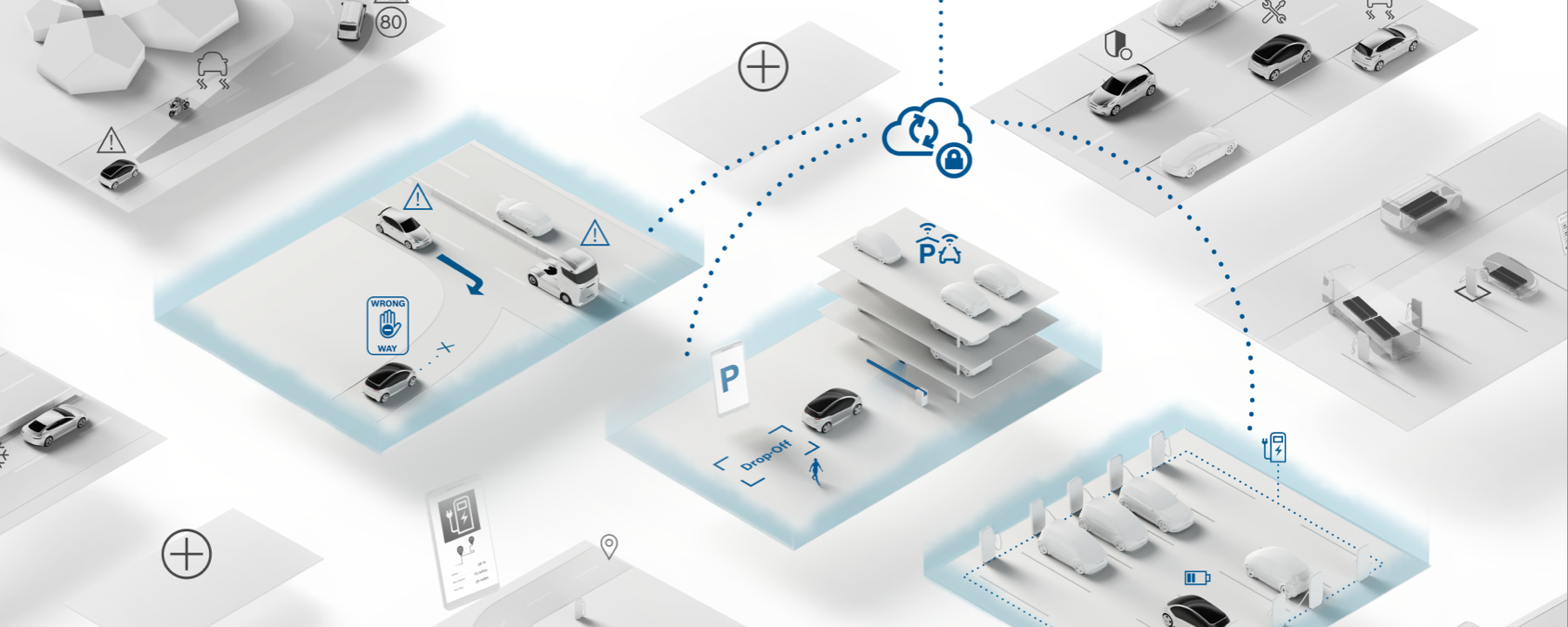Digitalization and connectivity offer enormous potential for innovative business models. Bosch supports these developments with a variety of services and secure connectivity solutions.
Many car drivers expect their vehicles to be fully integrated into their digital lives. In addition, new connectivity, automation, and personalization features will be increasingly implemented with software in the future. While in the past the customer’s experience of a car was primarily defined by hardware, software is now taking on a much more important role. This trend of software massively shaping the customer experience and in some cases even the specification of the hardware is referred to as the “software-defined vehicle” (SDV). This evolution not only affects development and operation, but also makes new business models and types of collaboration possible.
Continuous optimization through over-the-air updates.
In the future, new features can be activated individually according to the driver’s needs. Examples include temporary services, features, or apps. Software updates therefore allow for contract and pricing models in which new features are provided as a service. As a subscription or for individual purchase.
The vehicle can communicate with its environment, collect data in real operation, and send it to the cloud. Using this data, features and services can be continually enhanced and re-uploaded to the vehicle using over-the-air updates.
Trends such as e-mobility, automated driving, and mobility services are made possible in particular by software. Just like with a smartphone, drivers expect new features to be continuously available for their vehicles. This challenge also presents opportunities: With regular updates, the value of the vehicle can not only be maintained but also increased throughout the entire life cycle.
Achim Nonnenmacher, Lead Product & Portfolio Software-defined Vehicle.
Achim Nonnenmacher, Lead Product & Portfolio Software-defined Vehicle explains why it needs up to seven years to bring a feature update in today’s vehicles, what full programmability is going to change in the future and how vehicles will improve while they are already in the field.
Today, a vehicle is in its best condition when it leaves the factory. But in the future, software can be continuously optimized within the limits of the hardware. This means that the vehicle can even improve after leaving the factory. For example, through updates to the vehicle features and upgrades and improvements. Software solutions will therefore become the key feature that vehicle manufacturers and fleet operators use in the future to set themselves apart. This paradigm shift is made possible in the first place by the separation of hardware and software.
Today, a vehicle is in its best condition when it leaves the factory. But in the future, software can be continuously optimized within the limits of the hardware. This means that the vehicle can even improve after leaving the factory. For example, through updates to the vehicle features and upgrades and improvements. Software solutions will therefore become the key feature that vehicle manufacturers and fleet operators use in the future to set themselves apart. This paradigm shift is made possible in the first place by the separation of hardware and software.
The software-defined vehicle is the logical consequence of today’s five greatest mobility trends. These consist of software and services, personalization, automated driving, connectivity, and electrification. The software-defined vehicle provides the perfect platform for all of these trends with its centralized, cross-domain E/E architectures . In the past, individual systems within the vehicle could be considered with an approach involving
separate domains. Integrating them into one overall system was already a challenge. Dependencies, especially in in-vehicle communication, had to be considered and the systems had to be closely matched with each other in order to work. These classic vehicle architectures are now reaching their limits. The solution: the software-defined vehicle.

Chairman of the board of management
The paradigm shift in E/E architecture and the associated vehicle evolution demands closer collaboration between car manufacturers and suppliers. Bosch supports its partners in this regard through joint software development in the cloud. A comprehensive technology platform spanning from the vehicle to the cloud reduces the complexity of software development and system
integration. This enables over-the-air updates to run as smoothly as they do on smartphones. With preintegrated platform solutions, interfaces are reduced and software architecture and the cloud are designed to work in tandem. This makes updates much simpler.

Bosch is moving the development of connected services forward – with solutions for cars and trucks as well as two-wheelers. These services make the vehicle both a sender and receiver of data in the internet of things. It constantly exchanges data and information with the cloud, other vehicles, infrastructure, workshops, and providers of mobility services.
With this increasing connectivity, the potential for new offerings and business models grows, which will form an independent business ecosystem over time. Bosch supports this development with a wide range of inspiring services and secure connectivity solutions.
Are you interested in our solutions? Then write us a message. Our sales team will be happy to help you.

